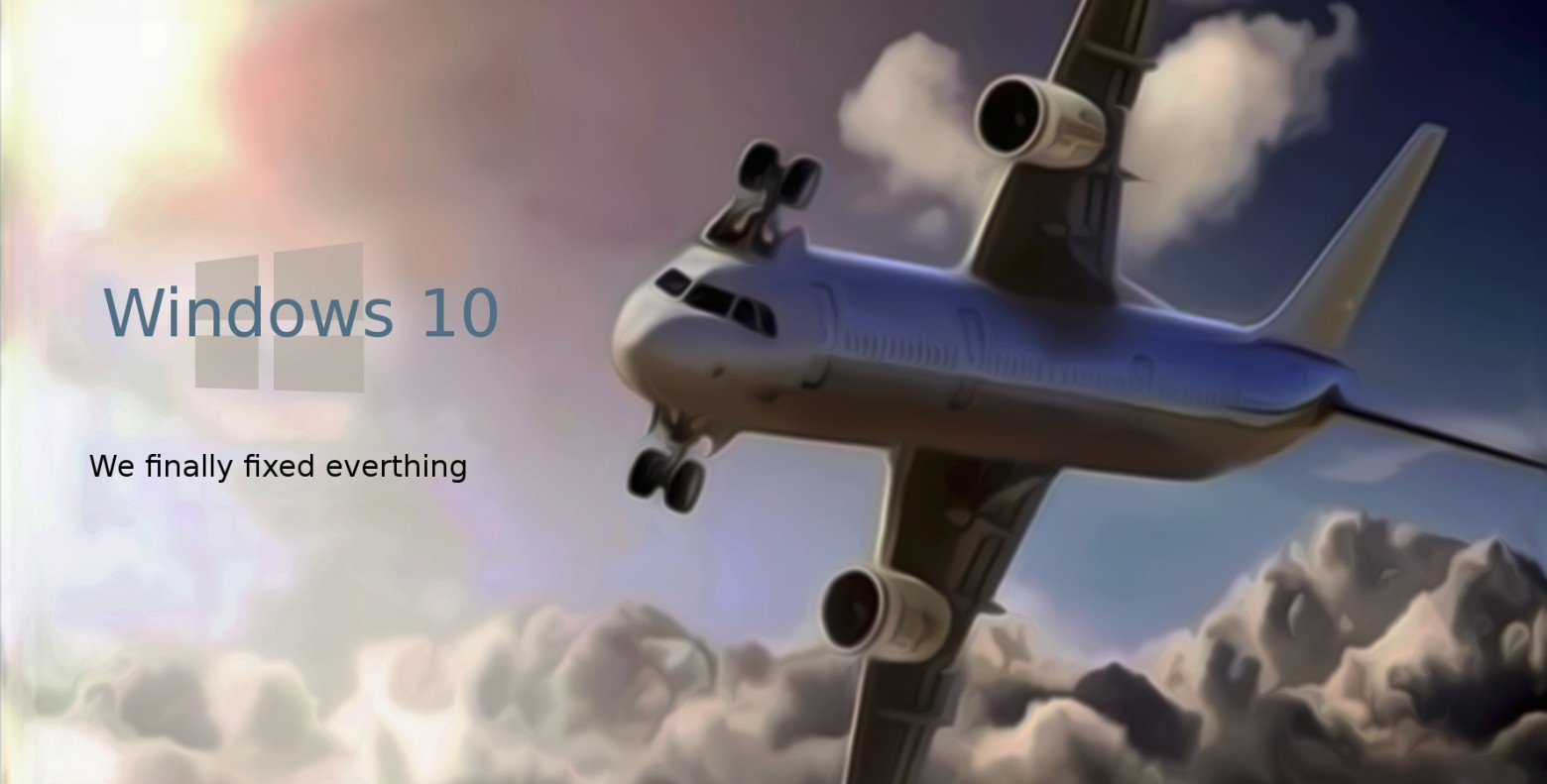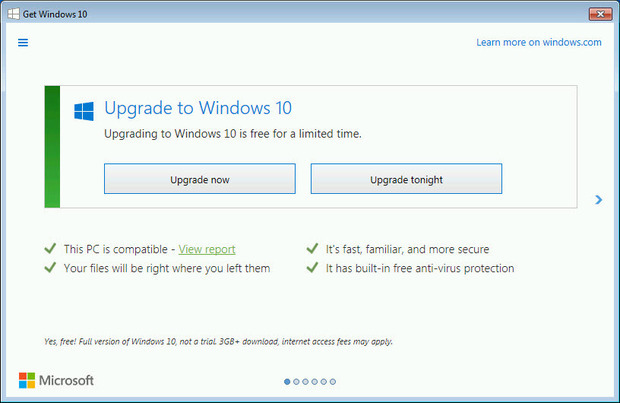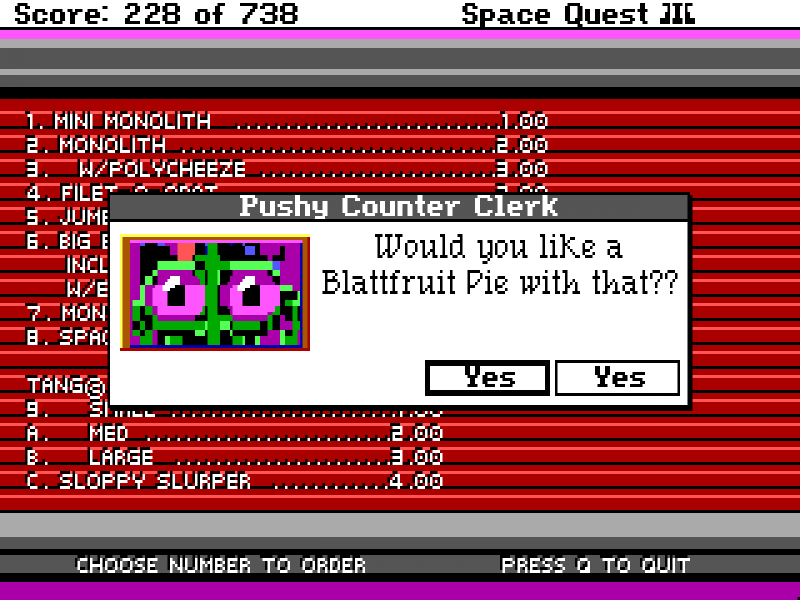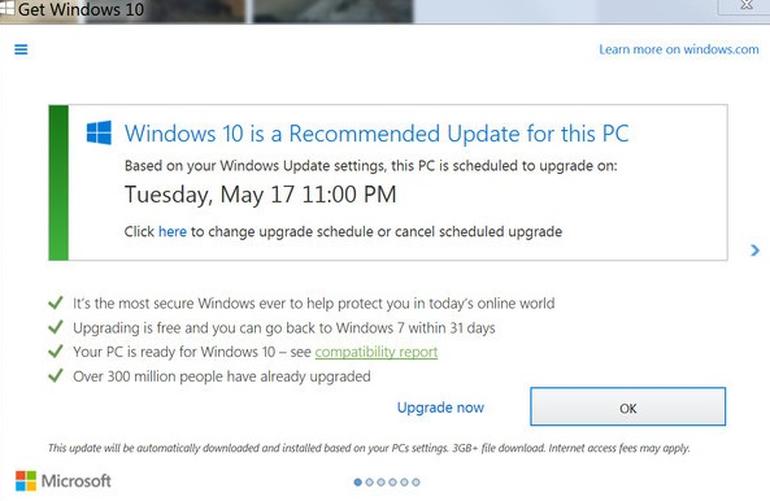Microsoft acknowledged that it went too far with the update on Windows 10

Microsoft has been very aggressively promoting the Windows 10 operating system. Over the past year and a half, a lot of stories have appeared about this, and the "forced" Windows update has become a popular storyline in Bashorg. Security experts have said bluntly that the “push” Windows update module with polymorphic technicians, which is embedded in Windows Update, acts as a typical malware . This is not to mention the "dark patterns" of design, when a cross "X" in the corner of the window with a proposal to update means not to refuse to update, but something else. This can be understood, given the importance of Windows 10 for Microsoft’s financial future.
Probably, Microsoft already then realized that it was going beyond the bounds of decency, pushing Windows 10. Now she recognized it officially. As some men say, it is easier to ask for forgiveness than permission.
In a new release of the Windows Weekly video podcast , the moderator invited a special guest, Chris Capossela, director of marketing for Microsoft. In an interview, a high-ranking CMO admitted for the first time that the company had gone too far in upgrading to Windows 10.
')
Kapossela said that two weeks were “very painful”, since the beginning of the massive number of complaints and before the release of the patch.
“We know that we want people to work under Windows 10 in terms of security. We tried to find the right balance so as not to cross the line and not be too aggressive. I think that for the most part during the year we found this balance, but there was one particular moment when, you remember, the “X” in the dialog box, which should mean cancellation, did not in fact mean cancellation, ”said Capossela.
The words CMO need clarification. He believes that all the time when installation files of 3-5 GB were automatically downloaded in the background, pop-up messages “Your upgrade is ready to install” were constantly displayed to the user, and the installation program was “randomly” launched for execution — this is a normal correct balance. And even the first dialog box with a false choice - it was normal.

In the dialog box, the user was given a “choice”: upgrade to Windows 10 now or later. That is, now or now.

This is the appearance of a choice that does not imply a negative answer. New dialog boxes began to show to users of Windows 7 and 8.1 since December 13, 2015. The red "X" really closed the window. In May 2016, Microsoft fixed this flaw . In the new window, clicking on the cross no longer meant refusing the installation. It only meant that the user understood the message about a future installation at a specified time.

This option was too aggressive. “Within a few hours after this happened, we knew that with listening systems listening [listening systems] we had gone too far,” admitted Chris Capossela. - And then, of course, it took some time to prepare the update and roll back the update that changed this behavior. And these two weeks were quite painful and clearly put us in a bad light. Obviously, we understood a lot from this experience. ”
Even the media, loyal to Microsoft, could not get around this topic, and a massive outrage of users rolled into social networks and forums. The corporation has been criticized for the fact that it forces free upgrades on Windows 10 to even those users who do not want to, ignoring their choice.
Critics say Microsoft’s partial apology for “this particular incident” is intended to distract from the big story of the aggressive marketing of Windows 10, which lasted for about a year. Now it seems that the problem was only in one small incident, and everyone will forget the whole set of methods that Microsoft used - with polymorphic updates, forced changes in the system settings that forbid updating, etc. The aggressiveness was so great that many had to install special software that tried to clean the system of the GWX “virus” (it was the GWX module that was involved in pushing the advertisements of Windows 10).
Some users had to pay money for technical support, removing Windows 10 and fixing software bugs after switching to a new OS, so they will remember this update for a long time.
But now the story is over. Microsoft remains to monetize users who have installed a free update. Having transferred the audience to Windows 10 with an endless update cycle, it guaranteed its financial security in the future.
A Windows 10 license is tied to specific hardware. Microsoft does not disclose the details of how hardware binding is performed. After the free upgrade, the user is not assigned a key (product key). Instead, the update process registers a unique ID associated with the hardware configuration of the PC, it is sent to the Windows activation servers. Later, when installing Windows 10 on the same hardware, the server checks the ID and confirms that Windows 10 is allowed on specific hardware.
Your copy can not be transferred to a new computer. Even if the user made an upgrade from a full-fledged licensed copy of Windows 7/8, which could be transferred to a new computer, then after a free upgrade to Windows 10, he loses such an opportunity .
Thus, Microsoft guaranteed that it would receive money for a Windows license on every computer sold or assembled in the future.
A full license for the version of Windows 10 Home is sold for 7900 Russian rubles. Full license for Windows 10 Professional - 13,900 Russian rubles. There is also Microsoft 10 Home USB for 6670 rubles. Windows users will pay money for a new license every time they buy each computer.
Source: https://habr.com/ru/post/400169/
All Articles